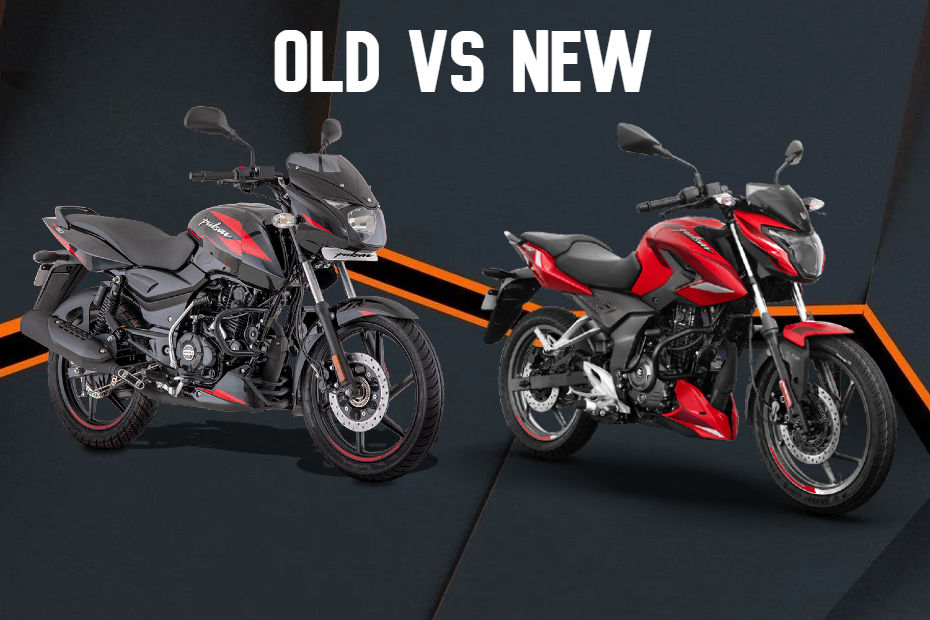Bajaj Pulsar P150 vs Pulsar 150: Differences Explained In 8 Pics
Modified On Nov 28, 2022 04:14 PM By Ishan Lee for Bajaj Pulsar 150
- 1501 Views
- Write a comment
Old school or new school - which one has a better syllabus?

The new age of Pulsar bikes is upon us. Bajaj has introduced the new Pulsar P150, the third latest-generation Pulsar to follow the path set by the N250. While there isn’t any clear word on the fate of the old Pulsar 150 and its relevance with the arrival of the P150, they continue to retail side by side. So here’s a quick look at what sets them apart.
Design:


The new floating-design panels, extended tank shrouds and muscular tail section of the P150 give it a much sportier appeal than before. Alternatively, while the old Pulsar 150 is still a sharp and sporty looking bike, everything on it looks minimal and a bit dated.
Headlight:


Modern Pulsars need modern equipment and that’s what the P150 gets. It features a bi-functional LED projector headlight, while the old Pulsar 150 gets a standard halogen headlamp. However, while the Pulsar 150 retains the iconic wolf-eyed DRLs, the new one gets a monobrow LED unit.
Exhaust:


Like the N160, the P150 gets an underbelly exhaust, whereas the Pulsar 150 gets a side-slung exhaust. We suspect the exhaust setup might also have contributed to the 10kg mass reduction on the new bike.
Features:

While both bikes have a semi-digital instrument cluster, the P150 gets the ‘infinity display’ unit as seen on the N250 and N160. The unit features gear-position and distance-to-empty indicators for everyday practicality. Alternatively, the Pulsar 150 feels a little barebone and dated because its semi-digital instrumentation only relays the basic readouts.
USB Charging:


The P150 gets a tank-mounted USB charging port like its other new siblings; meanwhile, the old Pulsar 150 does not.
Engine:

The Pulsar P150 gets a new 149.68cc engine, which produces 14.5PS and 13.5Nm, continuing to offer class-leading performance like the old-generation Pulsar 150. That said, the Pulsar 150 is powered by an older 149.50cc hear making 14PS and 13.25Nm, 0.5PS and 0.25Nm less. Both bikes get a five-speed gearbox.
Suspension:


The Pulsar P150 gets a telescopic front and a monoshock at the rear. Meanwhile, the Pulsar 150 gets a telescopic front fork paired with twin rear gas-charged shocks.
Braking & Tyres
In the twin-disc variant the Pulsar P150 gets a 260mm front disc and a 230mm rear disc. Surprisingly though, the old Pulsar 150 gets a larger 280mm front disc and a 230mm rear disc in the similar variant.
|
Twin Disc Variant- Tyres |
Pulsar P150 |
Pulsar 150 |
|
Front |
90/90 17 Tubeless |
90/90-17 |
|
Rear |
120/80 17 Tubeless |
110/80-17 |
Verdict:
|
Variant |
Bajaj Pulsar P150 |
Bajaj Pulsar 150 |
Price Difference |
|
Twin Disc |
Rs 1,19,757 |
Rs 1,14,176 |
Rs 5,581 |
|
Single Disc |
Rs 1,16,755 |
Rs 1,11,174 |
Rs 5,581 |
|
Base (Neon) |
NA |
Rs 1,04,448 |
NA |
As you can see, the difference between the prices of the new and the old 150cc Pulsars isn’t much, especially if you consider how much more the new P150 is packing. For Rs 5,500 more, you’re getting a proper modern-age Pulsar. The only advantage the old generation bike still has over the new kid is the availability of the Neon variant, which continues to retail as a super accessible 150cc Pulsar on sale today!
